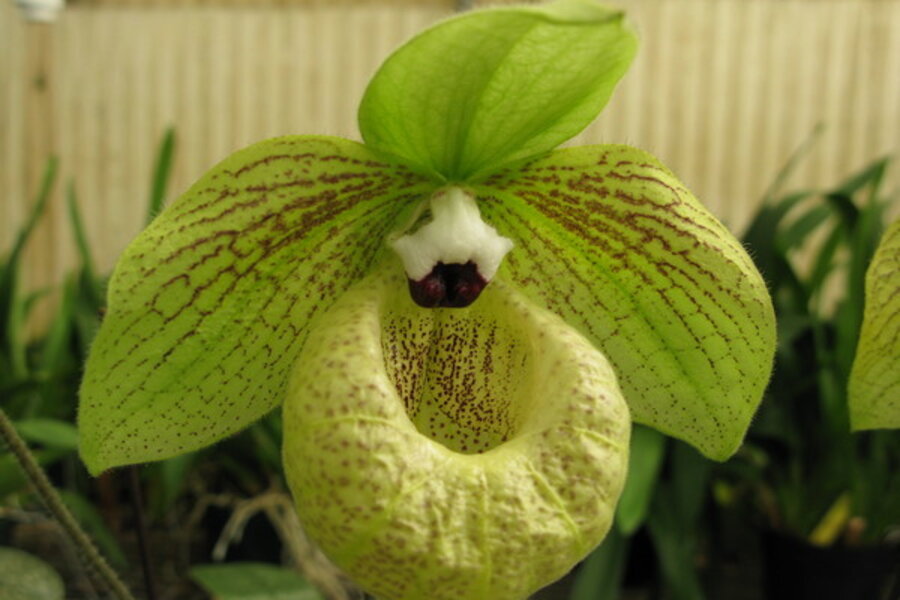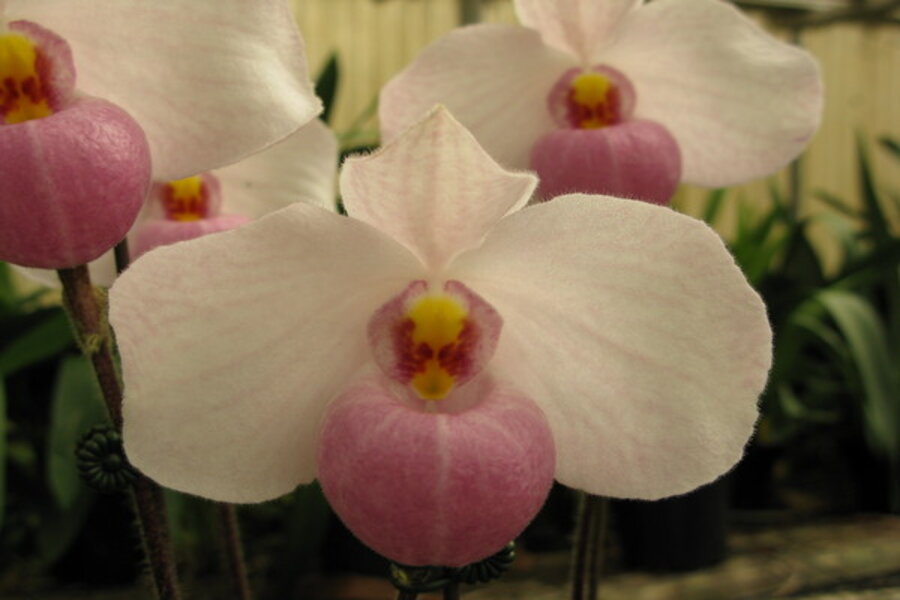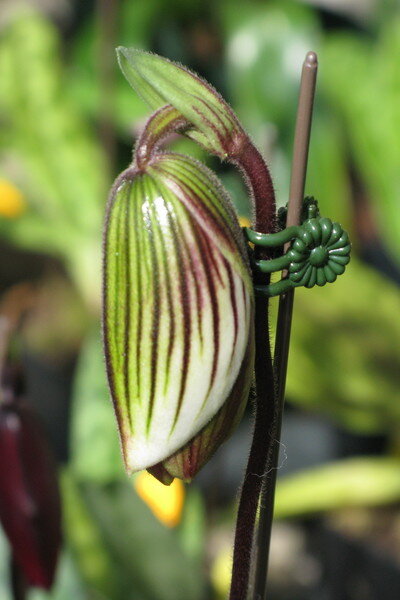The easiest orchids to grow
Loading...
Paphiopedilum orchids are one of the easiest orchids to grow at home.
I am fortunate in living a mere 30-minute drive from one of the largest and oldest under-glass orchid growers in the Midwest – Orchids by Hausermann in Villa Park, Ill. Its 3-1/2-acre range of interconnected greenhouses is home to the largest collection of Cattleya orchids in the United States, plus an immense selection of many, many different orchid species
An open house held the last weekend in February attracts thousands of people from all parts of the nation. Yet for us fortunate “locals,” the place is an orchid-filled fairyland seven days a week, year-round.
My first visit to Hausermann’s decades ago gave birth to a passion for a very specific orchid – tropical Asian lady’s slipper orchids (Paphiopedilum, pronounced paf-ee-o-PED-ih-lum), sometimes called lady slipper orchids.
At the first sight of these wonders, I was smitten. Remember the famous line from the movie, “Jerry Maguire”: “You had me at hello ”?
Well, you can apply it here. That first other-worldly Paphiopedilum (also known as a Paph) blossom I encountered had me at first glance!!
It wasn’t that I thought them to be so beautiful. It was more in the vein that they are so weird-looking that I thought them simply gorgeous.
These captivating bloomers come in myriad sizes, shapes, and colors. The unusual blossoms have a bizarre and immense pouchlike lip (or slipper-shaped pouch), often with ornately covered spots or stripes (sometimes even hairs and warts) that in many cases are in a contrasting color to the rest of the flower.
Many have long, flaring side petals and an incredibly showy dorsal sepal (that’s the top part of the blossom, to you and me). Flowers have a waxy texture and will last for six weeks or longer on the plant.
Orchids vary in temperature preferences
The straplike leathery leaves of Paphs can be either dark green or mottled. Incredibly, leaf color indicates the plant’s temperature preferences, so it’s hard to go wrong. Generally, the lady’s slipper orchid will be comfortable at any temperature that is comfortable for us humans, such as a range of 55 to 75 degrees F. (13 to 24 C).
Solid green leaves prefer cooler temperatures -- 55 F. (13 C) at night, 60 to 65 F. (15 to 18 C) during the day. Those with mottled leaves need more warmth, and are generally comfortable 10 degrees warmer.
One important fact to remember is that without a day-night fluctuation of at least 10 degrees F., your plants will produce healthy foliage but may refuse to bloom.
General tips for lady's slipper orchid care
In the wild, Paphs grow in well-drained humus on the forest floor, where light levels are low and humidity is high. Thus, as long as you meet their humidity requirements, they are perfect for growing indoors, since they can tolerate lower light levels.
These orchids love lots of fresh water, but they do not take kindly to having their feet wet. They will rot if they stand in water. But, that said, they also do not like to stay dry for more than a day or two, especially when actively growing or blooming. They enjoy high humidity, so I have all my plants sited on pebble trays filled with water.
Fertilize every other watering with a very weak, liquid-based orchid fertilizer.
For the most part, I have not experienced many pests or diseases with my Paphs. Once, a couple of my lady’s slipper orchids were attacked by mealy bugs. After isolating the plants, removing the mealy bugs, and repotting the plants, on the advice of one of the salespeople at Hausermann’s, I sprinkled finely ground cinnamon on the leaves and soil, and have not had a repeat of the problem.
Whether it was the cinnamon or the cleaning up of the bugs that cured the problem, I can’t say. But for a while, my plant stand exuded a most delicious scent.
Once the plant flowers, I repot them, in a loose orchid mix. That is generally an annual event as Paphs hate stale soil.
Recently, while recovering from a surgical procedure, I left my plants in the hands of my non-gardening husband. Though I knew he would take good care of them and I did expect them to survive, Iwas pleasantly surprised to see how well they thrived under his care. Well, take a look at the pictures [two above and two to the left] and see if you agree.
-----
Betty Earl, the Intrepid Gardener, blogs regularly at Diggin' It. She's the author of “In Search of Great Plants: The Insider’s Guide to the Best Plants in the Midwest.” She also writes a regular column for Chicagoland Gardening Magazine and The Kankakee Journal and numerous articles for Small Gardens Magazine, American Nurseryman, Nature’s Garden, and Midwest Living Magazine, as well as other national magazines. She is a garden scout for Better Homes and Gardens and a regional representative for The Garden Conservancy. To read more by Betty, click here.








